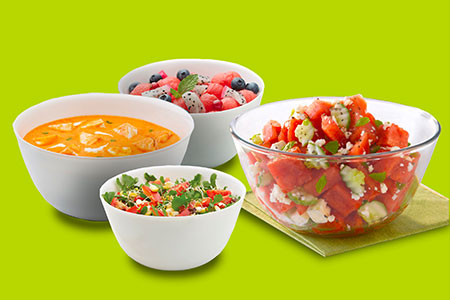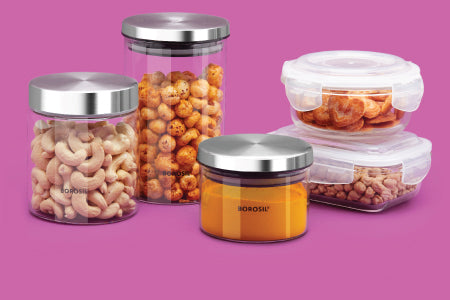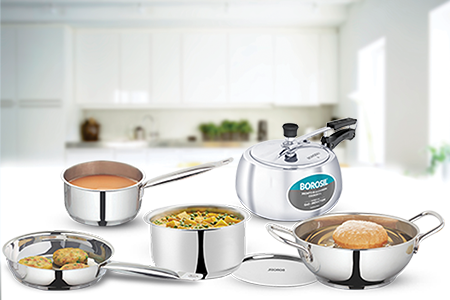
Learn How to Make the Most Popular Plant Milks at Home: Oat, Almond & Coconut
In modern times, choosing a litre of milk involves considerations that reach beyond merely cow's milk. The market now presents a range of non-dairy milk alternatives derived from plants. This shift towards plant-based milk mirrors the growing concerns individuals have about their health, environmental impact, and animal welfare.
Opting for plant-based milk over traditional cow's milk comes with numerous advantages. This shift aligns with the current focus on health and sustainability. While a completely plant-centric diet offers the most benefits, even making the simple switch to plant-based milk can contribute positively to both personal health and the global ecosystem.
If you're seeking a reason to transition to plant-based milk alternatives in India, we will provide you with 5 compelling ones!
1. Improved Health: Plant-based milk offers a healthier option, as it generally contains less fat and fewer calories compared to cow's milk, especially when opting for unsweetened varieties.
2. Abundant Nutrients: Depending on the formulation, plant-based milk provides a diverse array of essential vitamins and minerals. For instance, soy milk boasts 7 grams of protein, almond milk offers Vitamin E, and hemp milk is rich in Omega-3 fatty acids.
3. Inclusivity: An often overlooked fact is that a significant number of children are lactose intolerant. This condition disproportionately affects people of colour, with statistics revealing impacts on African Americans (70%), Asian Americans (90%), Mexican Americans (53%), and Native Americans (74%).
4. Environmental Advantages: Shifting away from dairy is environmentally responsible. Animal agriculture, notably cattle farming, is a major contributor to the climate crisis. Cows, in particular, produce more greenhouse gas emissions than other livestock. Dairy operations also significantly contribute to water pollution and carry a substantial water usage footprint. For comparison, producing one gallon of milk requires 638 gallons of water, while a pound of tofu demands only 300 gallons.
5. Pleasing Taste: The delightful taste of plant-based milk is a major plus. Whether it's the nutty essence of almond milk, the sweetness of rice milk, or the creamy richness of coconut milk, these alternatives offer a delectable experience. With an array of choices available, you can always discover the perfect milk to complement your favourite treats, like a batch of warm chocolate chip cookies.
Did you know that regardless of its source, whether derived from beans, nuts, or seeds, any plant-based milk has a significantly smaller environmental footprint than dairy milk in terms of water and land utilisation, as well as carbon emissions? And now here's a twist, you can make homemade plant-based milk at home in the UK. Read on for the easiest recipes!
DIY Oat Milk Recipe

Step 1: Place the porridge oats in a bowl and pour enough tap water over them to fully submerge the oats. Cover the bowl using a shower cap or a kitchen towel and let it sit for 4 hours or overnight. Find a cool spot for this, avoiding the refrigerator.
Step 2: Strain the mixture through a sieve, dispose of the water, and give it a quick rinse under running water for a few seconds.
Step 3: Pour the oats into a blender or food processor. Add 750ml of cold water and ½ tsp of fine sea salt. Blend for 2-4 minutes until the mixture is entirely smooth, with no visible oats remaining. Creating a finer blend will result in a creamier milk texture. 
Step 4: Place a sieve over a container and line it with a fresh piece of muslin or a cloth with a fine mesh. It's important that the cloth has small holes, so materials like a j-cloth or tea towel might not be suitable. (Alternatively, you can use a fine strainer or a meshed coffee filter as well.)
Step 5: Position the prepared sieve over a bowl or jug, and carefully pour the oat milk into it. Allow it to strain for about 1 hour. Periodically, use a spoon to gently move across the bottom of the cloth to disperse sediment. This technique will facilitate the straining process.
Step 6: Once the majority of the liquid is in the jug, collect the edges of the muslin and firmly squeeze with both hands to extract the remaining milk. Dispose of any remaining oat pulp (or repurpose it by creating a body scrub by mixing in used coffee grounds).
Step 7: For a more fluid texture, you can incorporate 50ml of cold water into the mixture before transferring it into a bottle or container. Refer to our troubleshooting suggestions provided below. The oat milk will remain fresh for 2-3 days when stored in the refrigerator. Remember to give it a good shake before using it.
DIY Almond Milk Homemade Recipe
Step 1: Place the almonds in a spacious bowl and ensure they are fully covered with water. Cover the bowl and allow the almonds to soak for a minimum of 4 hours or overnight.
Step 2: On the following day, drain and rinse the soaked almonds. Transfer them to a blender along with 750ml of cold water. Blend until the mixture becomes smooth. Place a sieve lined with muslin over a jug and pour the mixture into it, allowing it to gradually filter through. You can aid the process by gently stirring the mixture with a spoon. 
Step 3: Once a significant portion of the liquid has passed through into the jug, bring together the edges of the muslin and firmly squeeze with both hands to extract the remaining milk.
DIY Coconut Milk at Home Recipe

Step 1: Obtain a ripe coconut and crack it open. Preserve the coconut water in a glass and use a handheld grater to grate the white flesh.
Step 2: Place the grated coconut into the container of a high-speed blender. Combine it with 1 cup of water and blend for a few minutes until the coconut is finely ground. 
Step 3: Transfer the blended mixture into a bowl or pan, ensuring it's lined with a delicate muslin or fine strainer. Alternatively, you can utilise a cheesecloth or a nut milk bag to separate and extract the milk.
Step 4: Gently press down on the coconut shreds using a spoon to ensure that all the milk is effectively strained. This method will allow you to separate and strain the coconut milk.
#BorosilTip: You could also opt to press the coconut gratings with clean fingers and extract the coconut milk.
Step 5: What you have now is concentrated Coconut Milk, also known as the first extract. Return the coconut shreds to the blender. Introduce 1 to 1.5 cups of water and blend once more.
Step 6: Once blended, strain the mixture into a separate bowl or pan using the same strainer or muslin. Employ the spoon-pressing technique on the shreds once more.
Step 7: This is the thin Coconut Milk or the 2nd extract. Now, you have the option to conclude or proceed to obtain the third extract. The process for obtaining the third extract is the same as that of the second. You can choose to store the second and third extracts separately or combine them. In my experience, when preparing curries, I typically blend the second and third extracts.
Step 8: With this process complete, you now possess freshly homemade coconut milk that's ready for use in your daily culinary ventures or baking endeavours. Keep the coconut milk in the refrigerator if you don’t plan to use it straight away. When refrigerated, it keeps well for 3 to 4 days.
By swapping traditional cow's milk for nourishing options crafted from beans, nuts, seeds, or other plant sources, we can unlock a range of benefits. From improved personal health and reduced environmental impact to inclusive choices that accommodate various dietary needs, plant-based milk offers a compelling solution.
So whether you're seeking a creamy addition to your morning coffee or a versatile ingredient for your favourite recipes, embracing plant-based milk opens the door to a world of possibilities that harmonise taste, well-being, and the well-being of our planet.






















